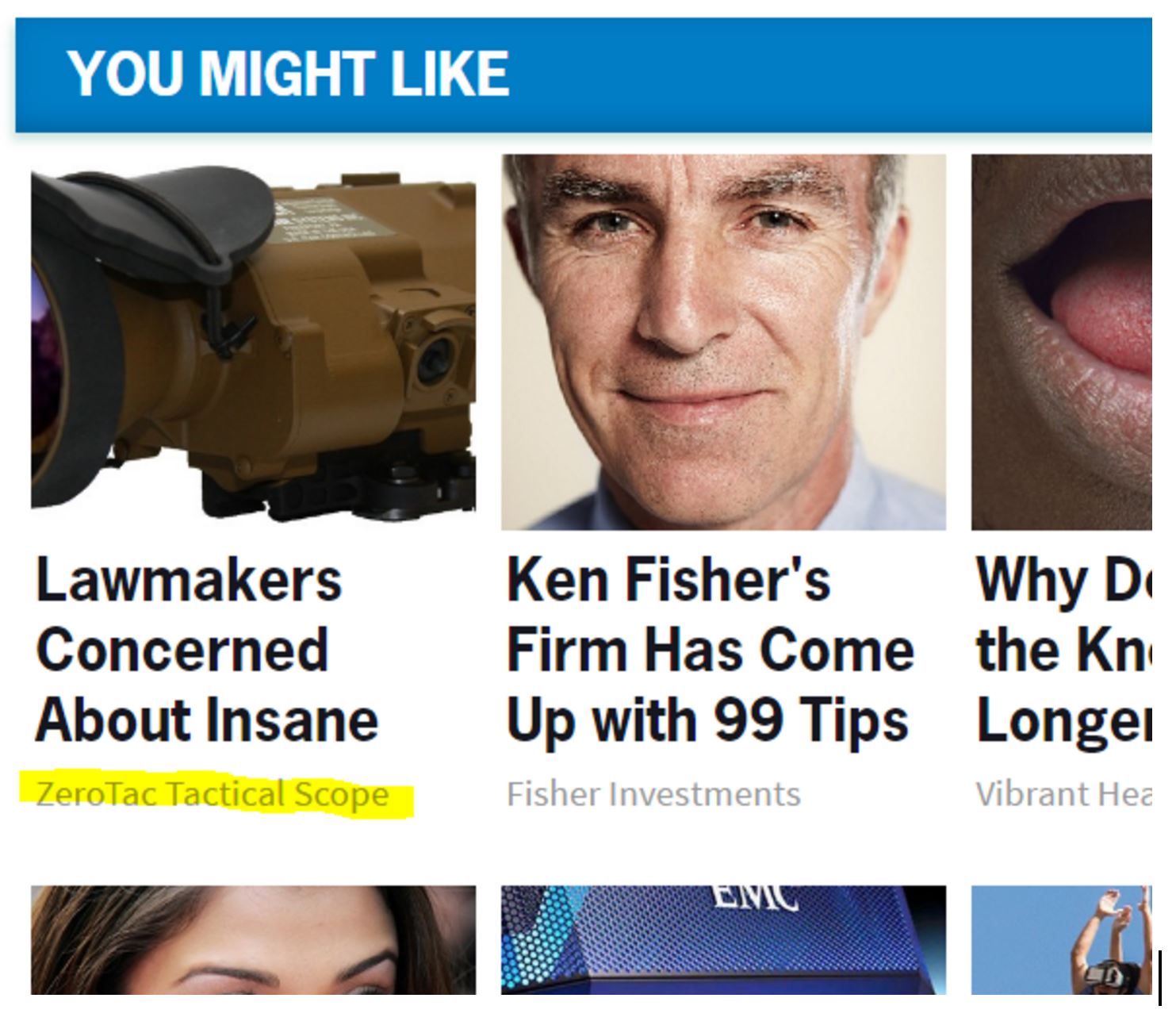8 Identifying Sponsored Content
With sponsored content, it is particularly important to locate the source of the claim before evaluating it. For example, review the headlines (below) from a popular technology magazine:

Look at the headline in the upper left corner. Are lawmakers really concerned about this insane military scope? Maybe. But Network World is not making this claim (below). Note that the ZeroTac Tactical Scope company is making the claim. It is an advertisement served from another site into this page in a way that makes it look like a story.

Sometimes sponsored content contains helpful information. For example, the piece below, provides an in-depth look at some current industry trends in information technology.

The source of this article is not InfoWorld, but the technology company Hewlett Packard, and the piece is written by a Vice President of Hewlett Packard, with no InfoWorld oversight. Sponsored content can be a challenge to spot, so make sure you look at the fine print above or below the article.
After you leave college and begin your career, you may be asked by your employer to find information on a topic in the fields of business, technology, or health. For example, your supervisor needs to determine whether a particular piece of very expensive office equipment would aide in streamlining a workplace process. Your job is to find articles that show whether introducing this piece of equipment will be a benefit to the office. You want unbiased information that gives both the pros and cons of introducing the equipment into the workplace. You do not want vendor-biased content at this stage of your information search.
If your employer decides to purchase the equipment, then you will investigate the various vendors and compare costs, features, service agreements, reputations, etc.

